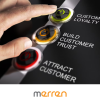Surveys are a powerful tool for collecting data and insights from your target audience. However, creating an effective survey that collects actionable data can be challenging. This is where survey design comes into play. Survey design refers to the process of creating a survey that accurately measures the information you need. In this blog post, we will explore what a survey design is and why it is important in collecting actionable data. We will also dive into the three C’s of survey design – clear, concise, and communicative questions – and how they determine the effectiveness of your survey.
What is a survey design?
Survey design is the creation of a questionnaire or survey to gather targeted data by identifying research objectives, selecting appropriate questions, and determining the target audience. A good survey design should be clear, concise, and impartial to achieve accurate results. The formatting and layout also affect response rates and data quality. Alongside this, the distribution channel will determine the number of responses you obtain in your campaign.
The Need of Survey Design to Collect Actionable Data
To gather useful insights through surveys, define clear objectives for effective survey research. Identifying the target audience is equally important when crafting questionnaires tailored to their expectations. There are different types of questions one can use in surveys: closed-ended questions with answer options like Likert scales, open-ended questions that allow people to express their thoughts freely, demographic questions that classify respondents based on age, gender, or location. The length and format of a survey are also critical factors affecting its success rate. Incorporating images and videos can clarify information while avoiding jargon and technical terms helps maintain clarity.
The Three C’s of Survey Design
Creating effective surveys boils down to the three C’s of survey design: clarity, conciseness, and communicative. Following these three principles can lead to a successful end result with accurate results from your responses. Effective survey designing requires noting these essential factors which will help get better insights from your respondents. Always remember that creating an effective questionnaire means going beyond just writing good questionnaires; it means making sure that all aspects of the questionnaire from start to finish are well-constructed.

Clarity
Clear and concise survey questionnaires are critical for good survey design. Clear questions are direct in nature, make use of numerical scales or closed ended questionnaires with fixed options. It also includes a mix of open-ended formats where respondents can provide both qualitative and quantitative data.
Clear questions also include using simple language and sentence structure while avoiding double negatives or complicated phrasing ensures that the questions are easily understood by all respondents. This also means while designing questions, avoid jargon and complex terms people do not grasp. Keep it simple for people to comprehend and complete. Being direct avoids ambiguity and vague questions. Keeping these points in mind will help bring actionable data.
Conciseness
One way to get a high response rate is to avoid respondent drop out rate and fatigue. This is when you keep feedback forms concise and brief. When it comes to good survey design, crafting clear and concise questionnaires is key. Keep your survey template to-the-point without using complicated phrasing or technical terms that might confuse respondents. Eliminate unnecessary questions or redundant aspects if you want to obtain authentic survey data. One way to do this is to opt for pre designed survey templates which are tried and tested. A good insight gathering tool by Merren can build a responsive questionnaire design across businesses.
Communicative
Communicative means using simple language and avoiding abbreviations and jargon while bringing customer feedback. Utilizing open-ended questions can encourage participant feedback in their own words. Communicative also involves actively closing the feedback loop which indicates that organisations truly value customer feedback.
Survey distribution channels are also a part of being communicative. When a feedback form reaches the right number of audiences, there will be a high response rate via the right communication channels.
Top 10 Survey Design Best Practices
To achieve good survey design, incorporate these top 10 best practices:
Set a goal for your survey
When creating an effective survey, set a clear and a pre-defined goal for your feedback campaign. This helps you design relevant and effective questions while avoiding irrelevant or unnecessary ones. Begin by identifying the information that you want to gather from your survey and how you plan to use it. Consider your target audience before tailoring your questions accordingly. Ensure that your questionnaire is concise, using simple, clear language so that all respondents can understand the questions with ease.
Survey designers should also test their surveys with a small sample group before launching them to check for clarity and compatibility across devices. It’s essential to analyze the data collected from surveys and use it to make informed business decisions on various topics. This includes market research, customer satisfaction, new product launches and customer service improvements.
Strike the right balance between question types
Incorporate different types of questions such as open-ended and closed-ended questions to collect both qualitative and quantitative data. To avoid skewed responses, avoid asking leading or biased questions. Survey designers should consider using likert scales for attitudinal measurement and ranking questions for prioritization purposes. The use of skip logic can be an effective way to personalize surveys based on respondent’s previous answers.
Avoid biased and leading questions
Use neutral language and don’t make any assumptions about the respondent’s views or experiences. A leading question is the type of a question that seeks a particular response from the audience. It could be a simple yes or no type formation. For example “Do you agree that our product is the best in the market?’.
A neutral question would be framed in this manner- share your thoughts on our new product. Keeping an objective tone can bring unbiased response.
Incorporate response scales
Respondents’ positive responses are gained by providing them with consistent answer options via the use of suitable response scales such as Likert scale, semantic differential scale and numerical rating scale. A good survey design consists of a balance between closed ended and open ended questions that aid in collecting quantitative and qualitative data respectively.

Use images and videos to clarify information
Using multimedia in your survey design can be a game changer. Offering the freedom to express via audio, video format, photos or texts can bring more open-ended responses for analysis. This will give better clarity alongside numerical data and statistics. Mediums such as Whatsapp surveys, Facebook messenger surveys offer multimedia facilities for response collection.
How can email surveys improve response rates?
Email surveys are also a good way to collect customer feedback. However, a main problem is that organisations are still collecting browser based traditional methods of answer collection. The issue is that the audience is led to an external browser. By then, the context of feedback is already lost.
To prevent this issue, resort to interactive and dynamic email templates as offered by AMP facility. AMP simply means accelerated mobile pages and was brought about by Google. This allowed marketers to seek responses in the same email itself – higher response rate, more interactive elements and better compatibility across multiple devices. All of which are a win-win when it comes to bringing actionable insights.
Conclusion
.Actionable data depends on the way you design a question form, how you formulate questions and what distribution channels you opt for. Everything collectively can bring actionable data. Using Merren, you can gather superfast insights and analyze them on a dashboard using filters of your choice. Opt for a multimedia format of feedback and watch your response rate improve by 10X.
If you want to witness this wonder for yourself, sign up for our 14 day free trial here. Supercharge your next survey data collection method and get high survey responses with Merren.





